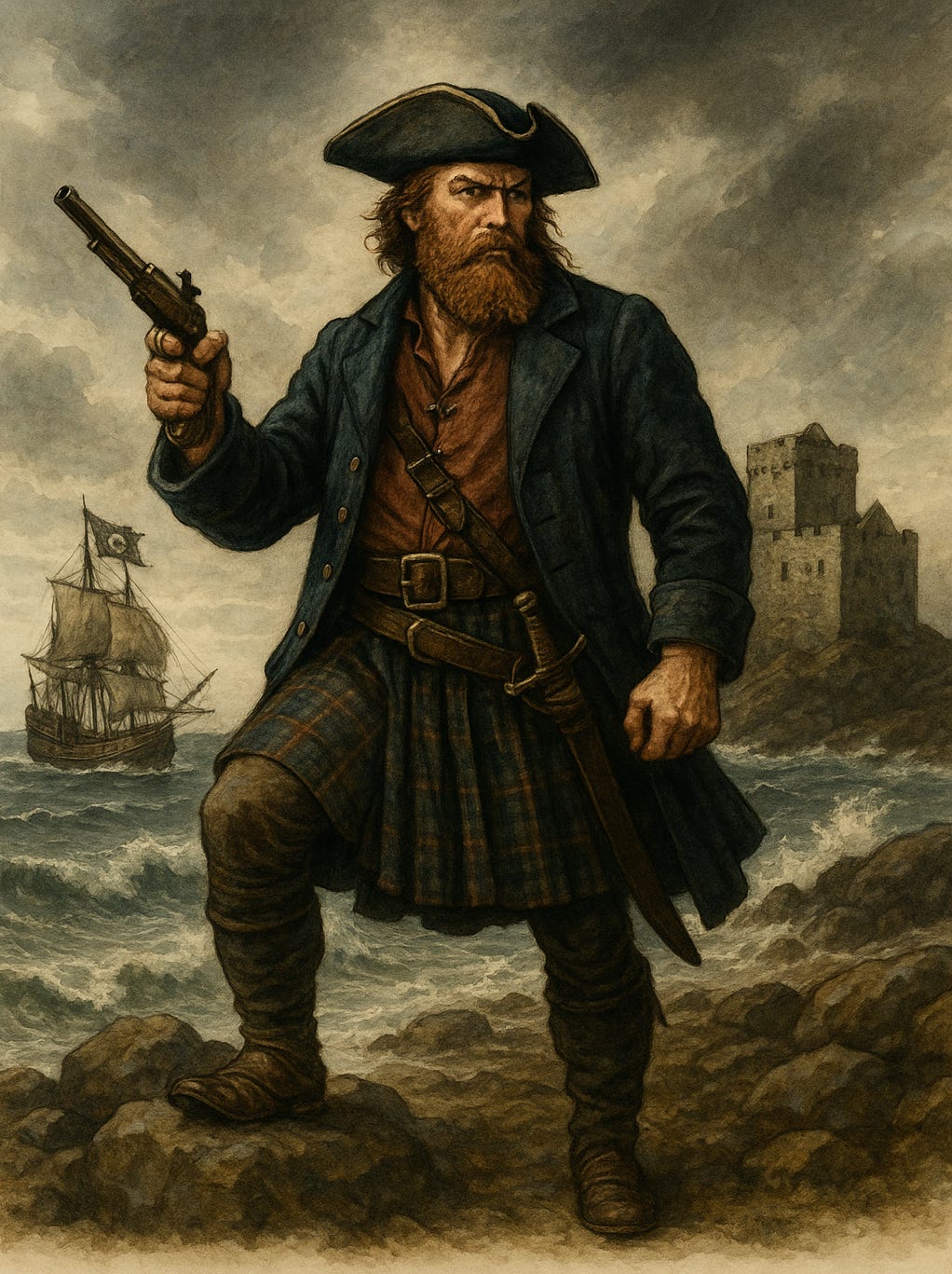Nestled in the windswept Outer Hebrides of Scotland, the island of Barra may seem today like a serene, remote haven. But centuries ago, it struck fear into the hearts of seafarers across the British Isles. The reason? The MacNeils of Barra — a clan whose mastery of the sea and unapologetic piracy made them notorious from Ireland to the southern coasts of England.
While many Highland and Island clans engaged in local feuds and raiding for resources, the MacNeils went further. They became legendary for their daring maritime plundering. Unlike their mainland counterparts who defended castles and farmland, the MacNeils built their stronghold, Kisimul Castle, directly into the sea — a fitting throne for a seafaring dynasty.
Strategically placed atop a tidal rock off the shore of Castlebay, Kisimul Castle seemed to grow out of the ocean itself. It was both a fortress and a beacon — a symbol that anyone entering MacNeil waters was entering the domain of pirates.
A Feudal System Built on Plunder
The harsh climate and poor agricultural conditions of Barra left its people with few choices. But necessity bred innovation — and in the case of the MacNeils, that innovation was piracy.
Instead of solely relying on livestock and subsistence farming, the MacNeils turned to the sea for wealth. Fishing, yes — but more profitably, plundering. From cargo ships hugging the coast of Ireland to merchant vessels bound for England, few were safe when Barra's ships took to the water.
The feudal structure of MacNeil society made piracy a communal enterprise. The Chief levied military duties from his tenants not in gold, but in service. Just as serfs might owe grain to their lord, Barra’s men owed manpower for the clan’s daring raids.
Even the revenues of piracy were organized: spoils brought back from raided ships were redistributed according to rank and loyalty. Clan MacNeil wasn’t just a pirate gang — it was a pirate state, structured and sustained through centuries.
Yet the Chief of Barra, unlike a tyrant, was often seen as a provider and protector. If a tenant lost a cow due to bad weather or famine, the Chief would replace it. If a man’s wife died, the Chief selected a new bride for him. This odd mixture of benevolence and authoritarianism bound the people tightly to their leader, despite the cost of constant war-readiness.
Ruairi the Rover: The Last Great Pirate Chief
The most infamous of the MacNeil pirates was undoubtedly Ruairi an Tartair — “Roderic the Turbulent.” His name is still spoken with awe and wariness in Hebridean lore. No ship, no matter how well-armed or flagged under what nation’s standard, was safe from Ruairi’s hunger for plunder.
Ruairi’s brilliance wasn’t just in his sailing or his swordplay — it was in his use of geography. He mastered the hidden coves, fog-laced straits, and sudden squalls of the Hebrides, launching lightning raids before retreating into the maze-like coastlines where no English navy dared pursue.
Legend tells of cellars full of French and Spanish wines, rich plundered cargoes, and even black horses with golden shoes — wealth not just looted, but flaunted.
And his audacity didn’t end with his raids. According to tradition, after Ruairi dined, a bugler would ascend Kisimul’s tower and blow his horn. The message was clear: “Now that Ruairi has dined, the kings of the earth may eat.”
To many, this was arrogance at its peak — but to Ruairi’s people, it was pride. He was their shield, their patron, and their provider. They mourned deeply when he was finally captured, not by force of arms, but by treachery and whiskey.
In a dramatic turn of events, Ruairi was invited aboard a vessel under the pretense of friendship — and perhaps seduced by the promise of a feast and drink. Once onboard and incapacitated, he was locked below deck and taken to Edinburgh. He defended his piracy not as crime, but as justice for Mary, Queen of Scots, wronged by Queen Elizabeth I. His life was spared, though he lost his estates.
A Legacy Carved in Salt and Stone
Today, Kisimul Castle still stands, rising from the sea like a ghost of another age. Though its cannons are silent and its towers home now only to gulls and heritage tourists, it remains one of the most iconic sea fortresses in Scotland.
The MacNeils eventually emigrated, and their piratical heyday faded. But the tales endure — sung in Gaelic laments, whispered in Barra pubs, and etched into the identity of an island that once lived by the sword and the sail.
The MacNeils of Barra weren’t the only pirates of the Hebrides, but they were among the most feared, flamboyant, and fiercely remembered. Their story is not just one of crime, but of culture, resistance, and survival — and in it, we glimpse a Scotland far wilder than any tartan postcard would ever suggest.





